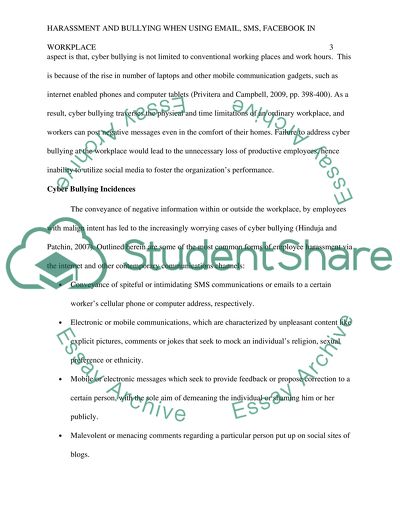Cite this document
(“Harassment and Bullying when using Email, SMS, Facebook in Workplace Research Paper”, n.d.)
Retrieved from https://studentshare.org/information-technology/1473779-management-of-it-project-and-system-analysis
Retrieved from https://studentshare.org/information-technology/1473779-management-of-it-project-and-system-analysis
(Harassment and Bullying When Using Email, SMS, Facebook in Workplace Research Paper)
https://studentshare.org/information-technology/1473779-management-of-it-project-and-system-analysis.
https://studentshare.org/information-technology/1473779-management-of-it-project-and-system-analysis.
“Harassment and Bullying When Using Email, SMS, Facebook in Workplace Research Paper”, n.d. https://studentshare.org/information-technology/1473779-management-of-it-project-and-system-analysis.


